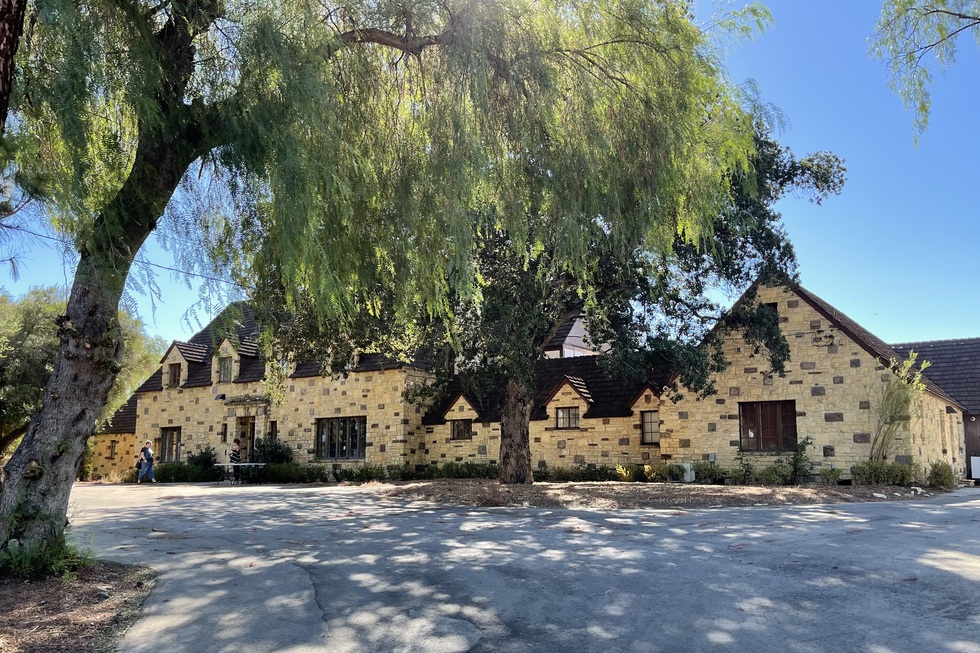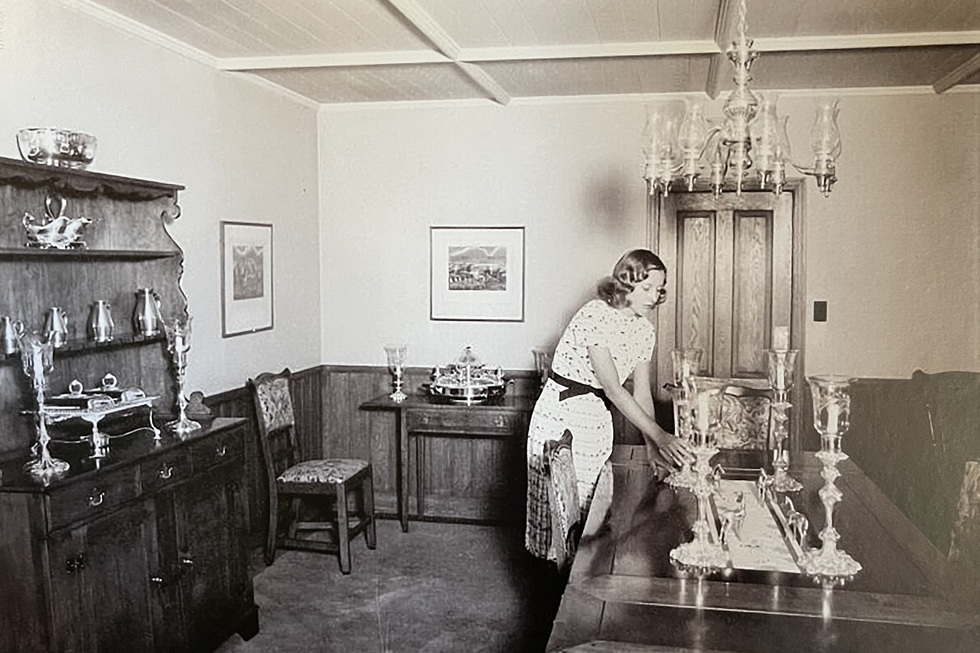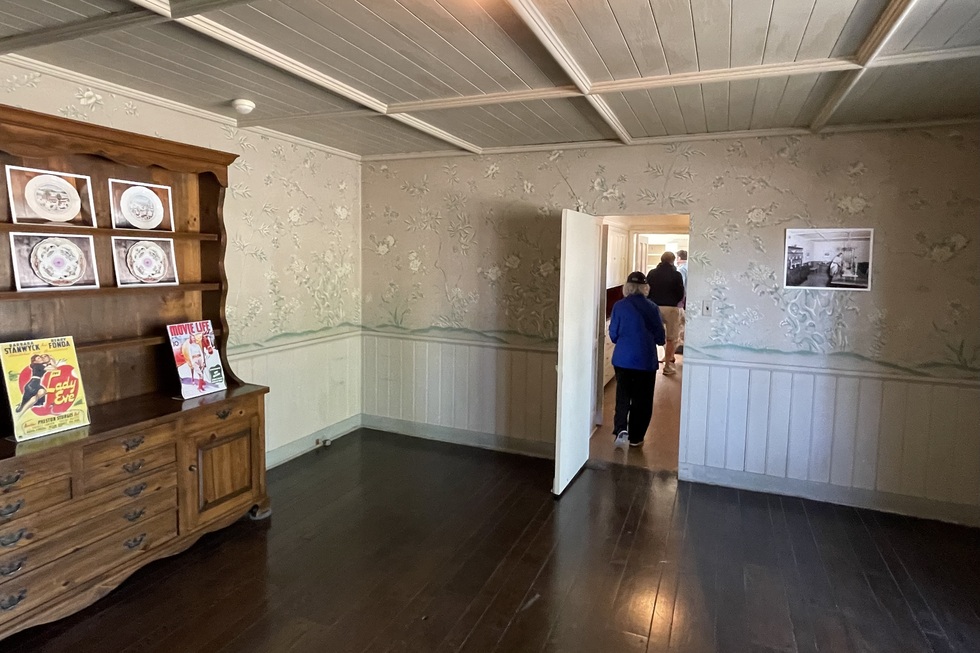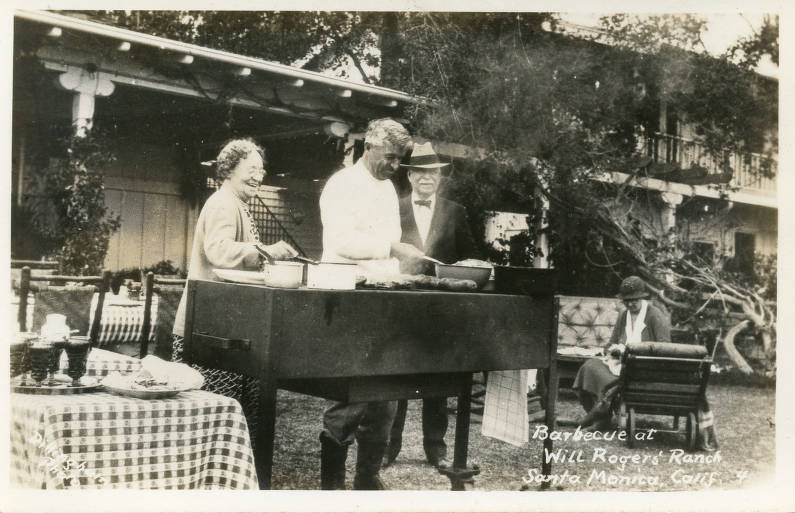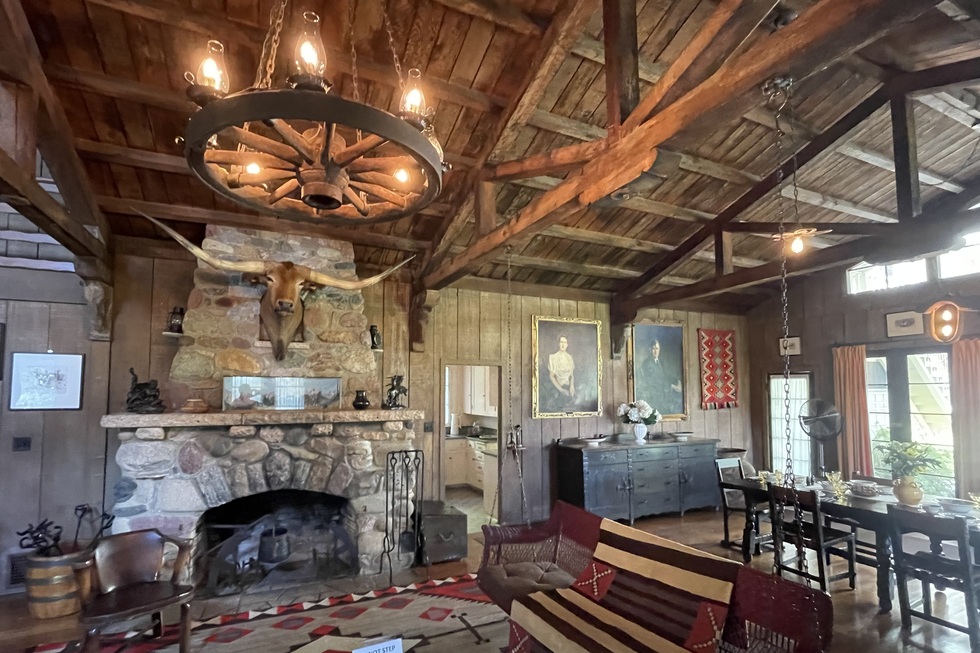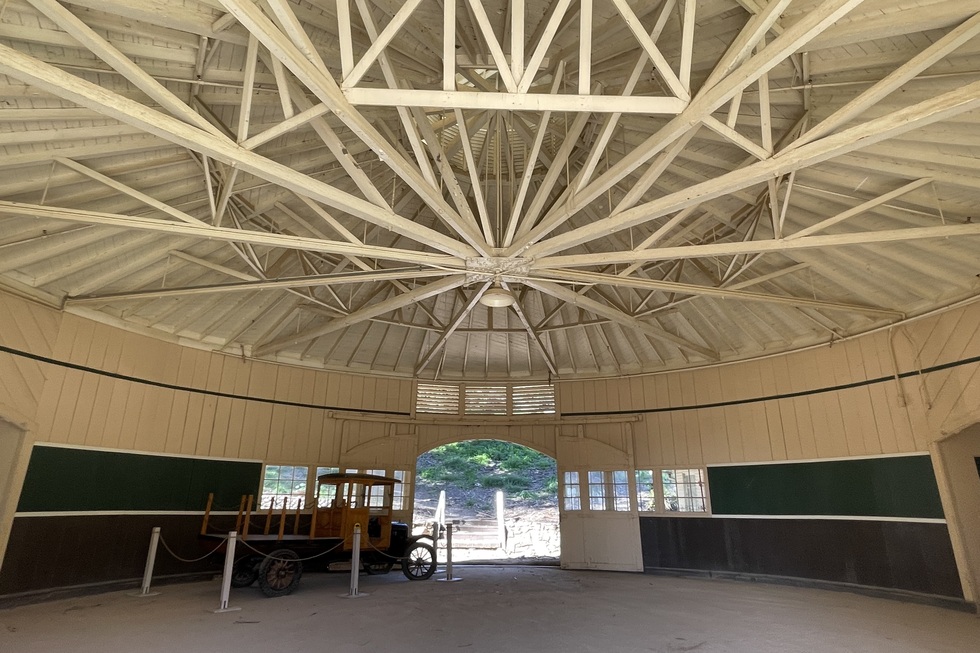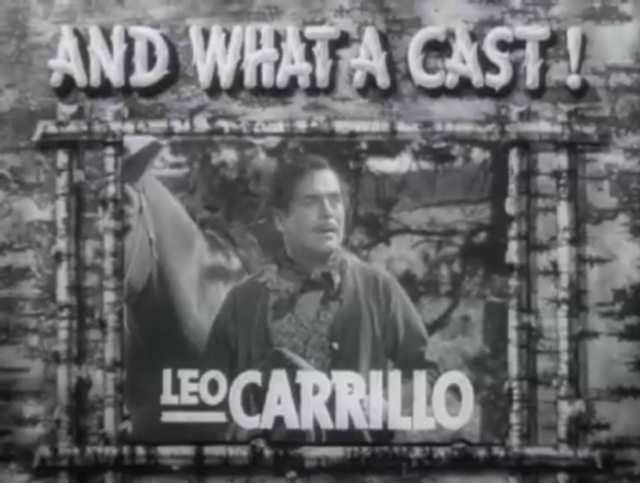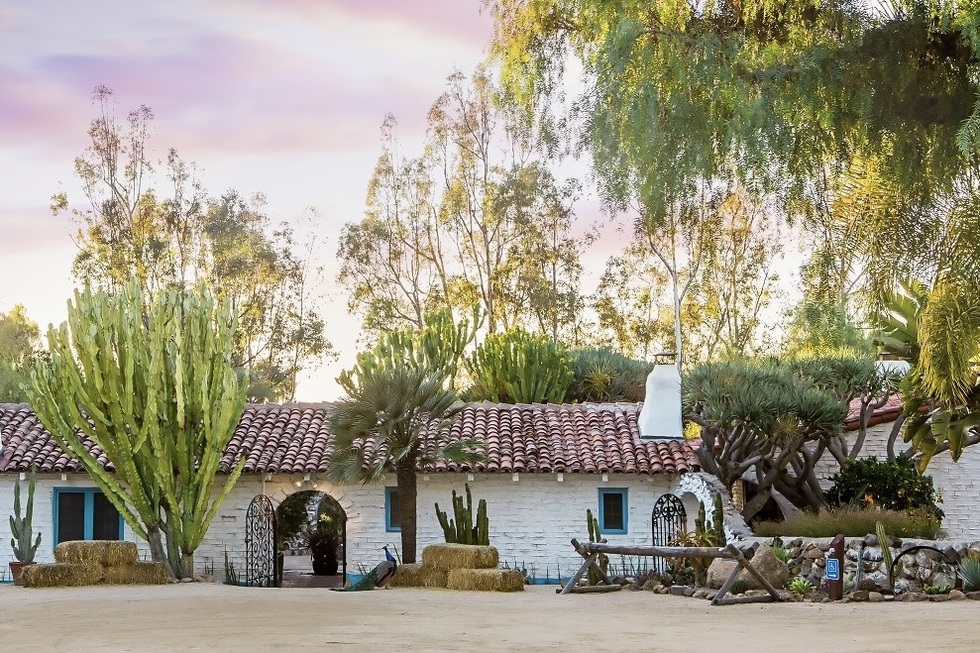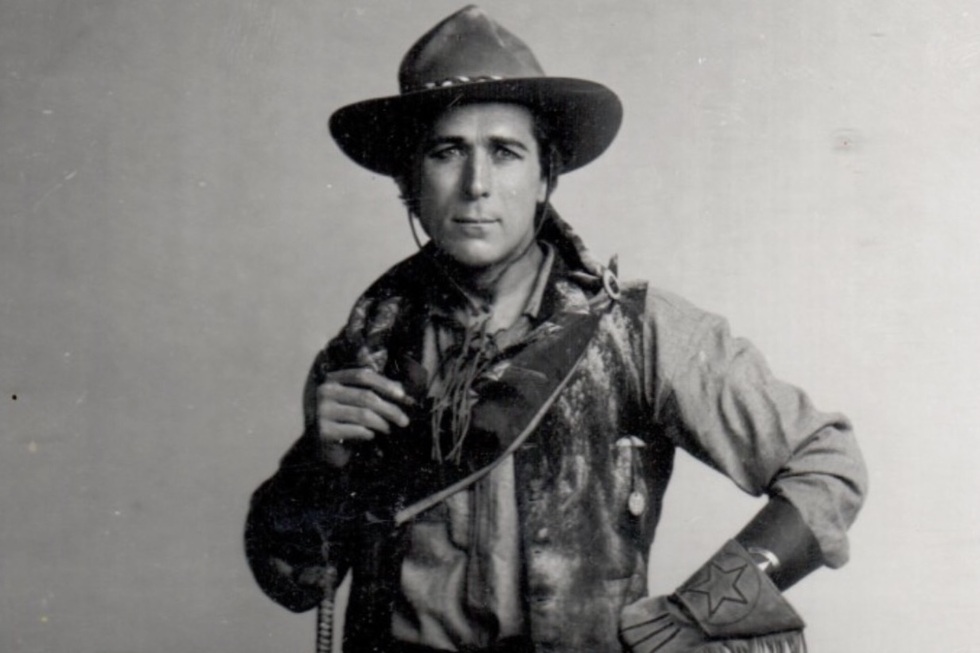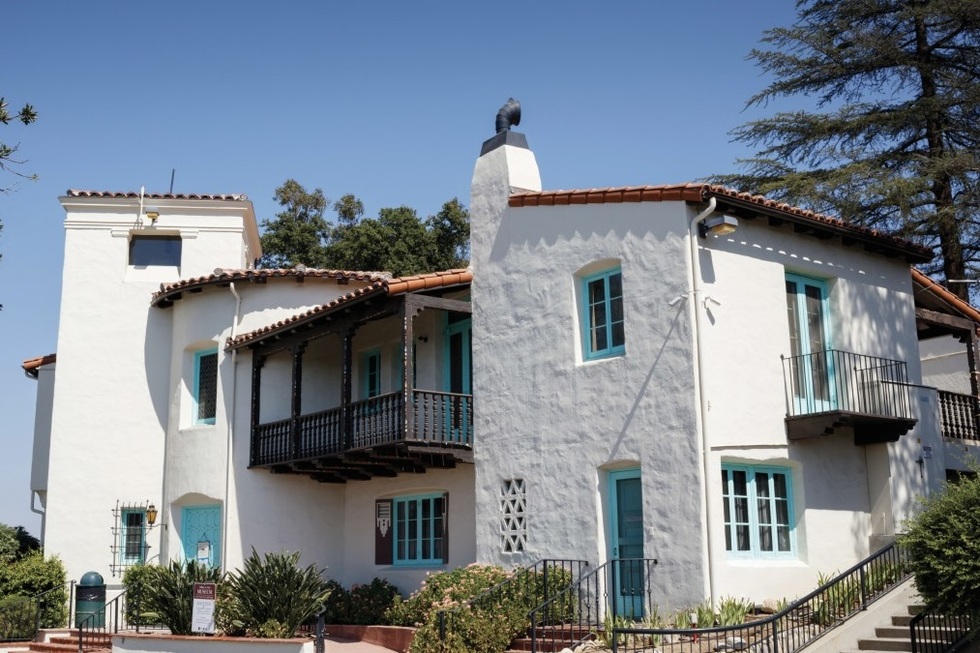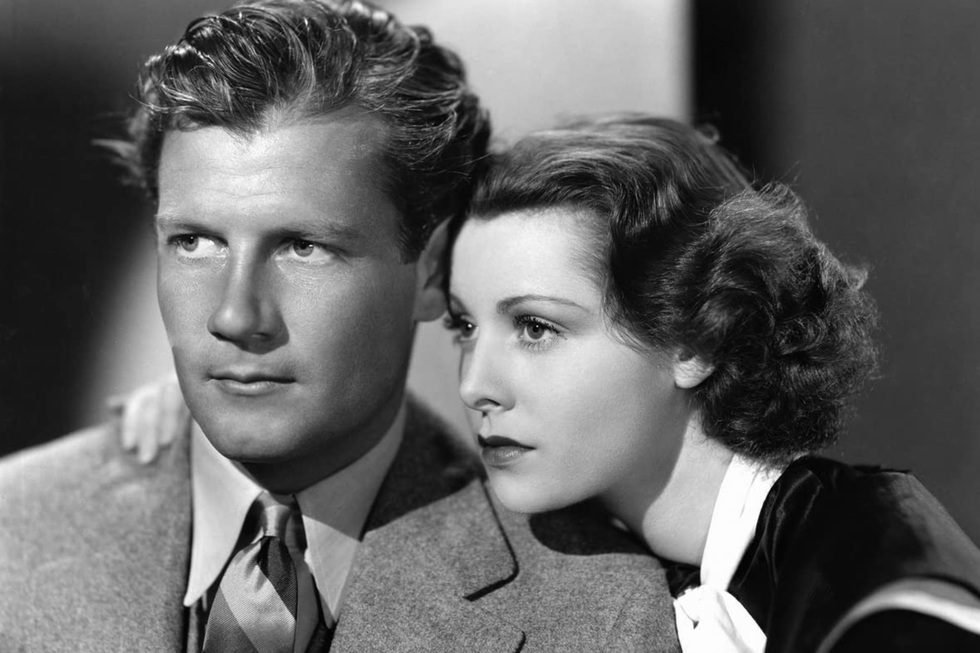Near Los Angeles, Visit the Ranches of Classic Movie Stars, from McCrea to Stanwyck
By Jason CochranOnce upon a time, Southern California was a promised land of wide-open spaces where farming, agriculture, and horse riding were essential pursuits. For the first 50 years of the 20th century, before overdevelopment paved over the landscape and turned it into a strip-malled megalopolis, many of the most bankable names in the entertainment business were able to live privately on huge rustic estates, traveling from studio gates to barn doors within just a few miles. Stars like Gary Cooper, Gene Autry, Ruby Keeler, Mae West, John Wayne, Al Jolson, and Wallace Beery all owned spreads within 10 miles of each other.
The ranch lifestyle even shaped how the industry works. When Lucille Ball and Desi Arnaz landed the contract to do I Love Lucy, they had lived happily on Desilu Ranch, a 5-acre estate in Chatsworth, about 25 miles from Hollywood, for a decade. The CBS network wanted the new show to be shot in New York City, where episodes would simply be performed live, like a theatrical show. But the couple didn't want to leave their Western ranch love nest. So Arnaz came up with the idea of recording the sitcom on film in Hollywood instead. The solution made I Love Lucy the first TV show that was able to air reruns that looked just as crisp as the original broadcast. That accommodation is why I Love Lucy is around to keep generating laughs and revenue to this day, and it's still the business model of television.
Change eventually came to California, as happens everywhere. Lucy and Desi left Chatsworth in 1956 and Desilu Ranch was finally torn down for suburbs in 1976. But some holdouts from the celebrity ranch glory days remain. Scattered amid the sprawl of the Los Angeles area, a few historic Hollywood estates survive in one form or another—and can be visited on vacation.
Pictured above: The Oakridge Estate, commissioned for actress Barbara Stanwyck in 1936
In 1936, 28-year-old Barbara Stanwyck, one of the most popular and powerful actresses of her generation, joined with her friends Zeppo and Marion Marx to build two homes and a ranch, which they named Marwyck, on 130 acres in Northridge, located 22 miles north of Hollywood in the rustic San Fernando Valley.
The architect (in collaboration with Robert Finkelhor) was Paul R. Williams, a favorite of L.A.'s elite. The surviving work of Williams, who also designed Desilu Ranch, is still prized today. For $30,000, Stanwyck, who grew up as an orphan in Brooklyn, commissioned a five-bedroom ranch house styled as an idealized Tudor English farm. She couldn't believe her good fortune. "How did I ever get out here with all this grass? About the only grass I ever got close to before was on the backdrop of a show," Stanwyck said, according to Victoria Wilson's biography, Steel-True.
Marwyck was originally intended to rank with the finest horse-breeding campuses of Kentucky. Down a slight slope from her home and pool, where a suburban development now stands, Stanwyck and the Marxes grew alfalfa, built stables, and laid out a three-quarter-mile running track. The facility was also rented for Hollywood shoots—you can see Marwyck and the two homes in 1940's Sporting Blood, and in 1949 Shirley Temple celebrated her 21st birthday there on the set of The Story of Seabiscuit.
That's Stanwyck pictured above, being photographed in her dining room for a magazine story. Stanwyck loved entertaining her famous friends; for her first Thanksgiving at Marwyck, she invited Clark Gable and Carole Lombard, who brought a crew to build a barbecue pit in the fields. In 1939, just a few years after purchasing Marwyck, Stanwyck married hearrthrob Robert Taylor, who had a ranch of his own that has also been developed for houses.
Here's the same room today. The house has changed very little because only one family besides Stanwyck's ever lived here.
Stanwyck didn't wind up staying at Marwyck for long. When she built it, decades before the freeways came, the San Fernando Valley was short on paved roads and the actress grew weary of rising before dawn to make the hours-long drive over rutted tracks through orchards and the Cahuenga Pass to reach the studios. Then World War II arrived and halted the thoroughbred racing industry that justified Marwyck's size.
In the early 1940s, Stanwyck decided to move closer to the city and sold her dream home to Oklahoma-raised character actor Jack Oakie (The Great Dictator), who lived there until his death in 1978. Oakie's widow Victoria deeded the property, which by then had been whittled down to 11 acres, to the University of Southern California, using the proceeds to establish a chair and a scholarship for students of comedy. USC in turn sold the property to the City of Los Angeles for preservation and future use.
The Marx mansion is now the site of a Chevy dealership and the horse ranch is a suburb, but somehow most of the original features of Stanwyck's two-level home have been left intact despite years without a resident. Pictured above is Stanwyck's main bedroom, from which she could once stare out the southern windows across a nearly uninterrupted expanse of the San Fernando Valley toward Los Angeles.
While the home remains in a raw state and is not yet a full-fledged museum—with funding, that could happen—it still conducts guided tours. Features from the 1930s and '40s were preserved by the Oakies, down to the original shelf liners in the linen closet, Stanwyck's surprisingly tiny marble-rimmed bathtub, and a swimming pool (currently drained) where the Double Indemnity star once posed for publicity photos with her young son.
"It's a treasure," a Los Angeles councilman said in 2010. "This was going to be a housing tract. Instead, it’ll be a beautiful resource for the entire Valley."
Not much has changed since then. The place still isn't open daily for tours, and there's no museum. But anyone can explore the Oakridge Estate on a regularly scheduled weekend tour (reservations required) conducted by a local volunteer group, the Friends of Oakridge, which steers the home's preservation.
The Oakridge Estate, 18650 Devonshire St., Northridge
TheOakridgeEstate.org
American culture has never produced someone as beloved and influential as writer and entertainer Will Rogers, and it never will again. Somehow, this laid-back Oklahoman parlayed his skill at rope tricks into international stardom. Will Rogers, who before his death was Hollywood's biggest box-office draw, was perhaps the only person in the history of the United States who could shift the zeitgeist overnight with a joke. He had the ear and admiration of presidents and tycoons, and yet he could puncture and disarm the same power brokers with quips that somehow offended no one.
Rogers cherished his Cherokee ancestry and upbringing in Oklahoma, and his Western outlook informed his life in California, where in 1922 he purchased 186 acres along the Pacific Ocean, north of Santa Monica. Here, he and his wife Betty built a homey ranch house and a cathedral-like horse stable where the world's biggest names (including Walt Disney, Spencer Tracy, and Clark Gable) came to attend barbecues (like the one pictured above—Rogers is dressed in white) and play polo on spacious fields.
Rogers' energy was boundless—he made more than 70 movies (an average of one every 3 months), wrote some 2 million words, and flew over 300,000 miles when airplanes were still tin cans with propellers. But Rogers' lifelong sense of adventure caught up with him in 1935, when he was killed in a small-plane crash in rural Alaska. He had just signed a contract for $1 million per picture (about $22 million today).
In 1944, Betty willed the house and the land to the state of California, which now administers the site as one of the most popular public areas in the western Los Angeles area. Most visitors are locals who come to walk dogs, hike miles of trails, and ride horses—a polo club still plays here.
Construction on the ranch house started in 1927, but when the Rogers home in Beverly Hills became infested with termites a year later, construction was expanded and the ranch took over as the primary residence. Since the couple and their children were the home's only permanent residents and it was preserved as a memorial, everything is remarkably unchanged, down to the books on the shelves.
As rich as he got, Will Rogers was eternally practical. The chandelier in front of the fireplace was made from a discarded wagon wheel that Will found on the property, while the lighting fixture over the dining room table was fashioned out of an old ox yoke by some friends in the scenic department of Fox studios. Out the back window of the kitchen, a retaining wall was built out of former city sidewalks, which had been thrown out when Wilshire Boulevard was widened.
The rest of the home is just as packed with memorabilia that is distinctly Rogers, from priceless Navajo rugs to a stuffed calf that a friend gave Will to persuade the star to stop practicing his lasso abilities on human guests.
The rest of the property is just as unchanged. The vast acreage beyond the back of the house remains undeveloped, so there are miles of trails for hiking or riding in the mountains.
Guided horse rides are still conducted on the grounds for both skilled equestrians and newbies. Will's gorgeous stable (pictured above) survives as well, as does a telling story about it: When the structure was first built, the central cupola rose so high that Rogers was concerned about being accused of having aristocratic airs. "Ten men in our country could buy the whole world and ten million can’t buy enough to eat," he once said. So at great expense, he had the roofline lowered to a more modest height.
Will Rogers’ Western Ranch House, 1501 Will Rogers State Park Rd., Pacific Palisades
Parks.ca.gov/willrogers; guided tours depart on the hour (no reservations required) from 11am–3pm Thurs–Fri and 10am–4pm Sat–Sun
Modern people may not know who Leo Carrillo was, but he was a well-connected player of his time and had a pivotal role in the preservation of California heritage.
Carrillo was a fascinating man, growing up with lofty ancestral connections to New Spain and Mexico in the pueblo of early Los Angeles, working as a newspaper cartoonist, performing in vaudeville, and finally becoming a successful character actor in more than 90 movies and as the sidekick Pancho on The Cisco Kid TV show. Carrillo was also a skilled dialect coach; for most of his roles, and even in many interviews, he faked a Hispanic accent, but in real life he spoke unaccented English and was even fluent in Mandarin Chinese.
In the late 1930s, Carrillo, whose sophistication included a deep respect for preserving history, owned about 3,000 acres in the hills of northern San Diego County, about 90 miles south of L.A. There, Carrillo hand-built a ranch using classic adobe techniques, complete with blacksmith's shop, barn, and a hacienda, which endures as a supremely charming museum.
Carrillo was friendly with the elite celebrities of the day, including William Randolph Hearst, Will Rogers, and Clark Gable. As a nod to the modern California lifestyle, Carrillo added a swimming pool among the mud-made rancho and old-growth trees.
All but 27 acres of the Carrillo estate has been whittled away by housing tracts, but what remains—a special-feeling oasis of peace and Old World style— is preserved under the stewardship of the Friends of Carrillo Ranch and the city of Carlsbad.
On weekdays, the ranch buildings are usually closed, so the best way to see inside the hacienda is on a scheduled weekend tour reserved through the Friends of Carrillo Ranch. Look around the grounds for the wandering peacocks, who have been resident here for years.
"It feels good here," said another California icon, TV host Huell Howser, when he visited in 2007. "I had my doubts that ... anything of the character and the feeling and the ambience of the old place could still exist, but it does."
Carrillo was an ardent conservationist as well, so we also have him to thank for other preseved pockets of predevelopment California. He served for 18 years in the California State Parks system and even set up a trust that funded the acquisition of some of the state's most popular reserves, including the Leo Carrillo State Park in Malibu, which has been seen around the world as the beach in movies and TV shows that include Grease, The Karate Kid, The Usual Suspects, and Better Call Saul.
Leo Carrillo Ranch Historic Park, 6200 Flying Leo Carrillo Lane, Carlsbad
Carrillo-Ranch.org
Nope, that's not actor Luke Wilson. That's William S. Hart, one of the most popular movie stars of the late 1910s and early '20s. Hart played a cowboy in some 70 films. And he was huge. When he appeared in New York City for a World War I Liberty Loan drive in 1918, around 50,000 people turned out to see him.
This movie cowboy was actually born in New York's Hudson Valley, but he became a purist about how cowboys were depicted in his films. Hart acquired a ranch house for downtime relaxation in Newhall, California, 28 miles north of the studio where he worked, which is now Paramount. (Hart's "city" house, in what's now West Hollywood, survives as a dog park and the West Coast home of the famed Actors Studio.)
Hart's ranch was more for pleasure than for getting his hands dirty—although he did own horses and a large pack of dogs, now buried here. You'll also find the gravestone of Hart's famous pinto pony, Fritz, who did his own stunts in the pictures. (Hart, on the other hand, used a double.)
Horseshoe Ranch, as Hart named his spectacular hilltop spread, retains its native California trees, its original furniture and appliances, props from Hart's movies, and valuable artwork such as pieces by Western master Frederic Remington.
Hart called his 10,000-square-foot 1927 ranch house La Loma de los Vientos ("The Hill of the Winds"). It hosted visits from friends including Wyatt Earp, Will Rogers (who gave Hart the bearskin rug in the main room, pictured above), Barbara Stanwyck, and Robert Montgomery.
The Hart ranch is among the most at-risk of the remaining celebrity properties around Los Angeles. Although the actor's will stipulated that Horseshoe Ranch must be maintained in perpetuity by the County of Los Angeles for the enjoyment of all people or else be transferred to the state of California, governments and political will have shifted. The city of Santa Clarita (also home to Six Flags Magic Mountain) wants to take over the site, and the resulting legal tussle has closed the ranch and thrown its future into doubt.
"We continue to advocate for careful consideration of the vulnerability of Hart’s house museum, and the need for it to be in the hands of an accredited museum, with the trained staff, financial resources and security that comes with that," writes historical Los Angeles walking tour company Esotouric.
In time, Hart became disillusioned with the movie business and retreated into privacy. His final film appearance was also the only time he appeared in a picture that had sound dialogue. In 1939, a film crew went to Horseshoe Ranch to record an introduction to a re-release of his 1925 silent film Tumbleweeds. In the clip, which shows how rustic the Santa Clarita area was before roller coasters and parking lots, audiences could hear, for the first time, their beloved dream cowboy speaking with the lilting, almost professorial accent of his English father and Irish mother.
Hart died on his ranch 7 years later—leaving it to the county instead of to his only son—and is buried in Brooklyn. Today, the ranch is in legal limbo, but all parties vow it will reopen to visitors again. That would be good for tourism, since this is the only ranch on our list that's easily accessible without a car.
William S. Hart Museum, 24151 Newhall Ave., Newhall; Metrolink station: Newhall
HartMuseum.org; museum currently closed pending stewardship change
The only celebrity property on this list that remains in the hands of the same family, the McCrea ranch was established by Joel McCrea, a handsome actor whose career spanned more than 85 feature films from the late 1920s to the late 1970s. McCrea was a favored muse of directors such as Preston Sturges and William Wyler.
McCrea grew up in Los Angeles; as a kid, he was director Cecil B. DeMille's paperboy, and a 10-year-old McCrea watched D.W. Griffith film the 1916 epic Intolerance in L.A.'s Los Feliz neighborhood. The actor always had a penchant for the Western style of life, so when his film career took off in the late 1920s, McCrea astutely began parlaying his earnings into land acquisition, at first buying nearly a thousand acres of pristine, rolling land at the head of the Santa Rosa Valley, about 40 miles west of Hollywood.
In 1933, McCrea married fellow actor Frances Dee (the couple is pictured above in 1933's One Man's Journey), and they lived on the ranch for the rest of their lives. Over 57 years of marriage, they gradually amassed some 2,300 acres here.
The McCrea home is a rare surviving ranch that incorporates colonial architectural elements, which were in vogue in the 1930s. But this wasn't an ornamental "gentleman's ranch" like William S. Hart's. Rather, the couple and their kids raised herds of cattle, grew grain, and toiled to tame the wilderness.
"One year, the IRS came out," grandson Wyatt McCrea told Frommer's on the TCM Classic Cruise. "And the auditor questioned [the movie star] about the deductions he took. My grandfather just held out his hands and said, 'Mister, I didn't get these calluses from acting.'"
Over time, the McCreas donated or sold off parcels of the original spread—about a third of the city of Thousand Oaks was built on former McCrea land—but reinvested the proceeds in working ranches in Nevada and central California. About 280 acres of the ranch are left around Thousand Oaks. That's enough space to keep the bluster of Southern California sprawl at a safe and silent distance.
Joel McCrea passed in 1990 and Frances Dee died in 2004, but their grandson Wyatt still lives on the property. He's made an effort to keep everything as original as possible, down to pioneer-era heirloom furniture and horsehair mattresses that predate the family's Hollywood chapters. The current ruler of McCrea Ranch is himself a keen protector of America's Western history, serving on the board of Oklahoma City's National Cowboy and Western Heritage Museum.
"Both my grandparents, neither one of them were pretentious by any means. They just wanted to be able to live life," says Wyatt. And the style in which the family ranch welcomes visitors retains that spirit.
Once a month in the summer, McCrea opens the property to visitors for al fresco movie screenings; otherwise the annual calendar is sprinkled with scheduled events like house tours. Each November 5, Joel McCrea's birthday, the estate is opened by reservation to the public for a birthday tea and tour. In late May, the main house opens as part of the ranch's annual Cowboy Cookout fundraiser.
On days the property is open, there's a visitor center with a small museum housing an only-in-California collection of artifacts like McCrea's boots, prop movie horse saddle, and a Golden Globe award. Eventually, with enough funding, curation, and restoration work on buildings dating back to the 1890s, the new generation of McCreas hope to expand access to the ranch on a more regular basis. Until then, you have to buy a ticket in advance for one of the scheduled open days.
The Joel McCrea Ranch, 4500 N. Moorpark Rd., Thousand Oaks
McCreaRanchFoundation.org; only open for scheduled tours and events





